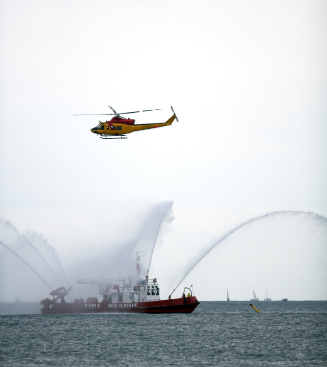The National Aerial Surveillance Program is an integral element of Canada’s ocean management. Canada takes a risk-based approach to ship-source pollution response and seeks to prevent marine pollution incidents. This prevention and response capability to deal with marine pollution incidents arising from ships is buttressed by the National Aerial Surveillance Program (NASP). The NASP delivered by Transport Canada is an important pillar of Maritime Air. Prevention of ship-source marine pollution in the west coast waters will be the subject of heightened media and public scrutiny. Read Darryl Anderson’s comments in the Canadian Press article on the February 19, 2014 Transport Canada announcement that funding for the aerial surveillance program will increase from $5-million to roughly $10-million a year over the next five years, allowing the country’s three surveillance aircraft to increase the number of flights to spot oil spills off Canadian coasts.
Maritime Air and the Role of the National Aerial Surveillance Program
The use of space-based and air assets are a central capability of a little-known element of Canada’s ocean management regime – the concept of Maritime Air. This concept seeks to include all the ocean management functions provided by air assets. Maritime Air provides government departments tasked with an ocean management responsibility, with a flexible and rapid response sensor platform (depending on the particular ocean management function.
K. Joseph Spears in this 2013 FrontLine Security article reveals that the concept of Maritime Air embraces surveillance, law enforcement, marine domain awareness, fisheries and antipollution and scientific patrols – it is a critical element of marine security and at the forefront of technology and data fusion. Combining the powerful ocean management tool of Maritime Air capabilities with space based assets is clearly the only way to provide cost effective service delivery throughout Canada’s massive ocean space. The key is data fusion and real-time downloading of data collected from the sensors.

